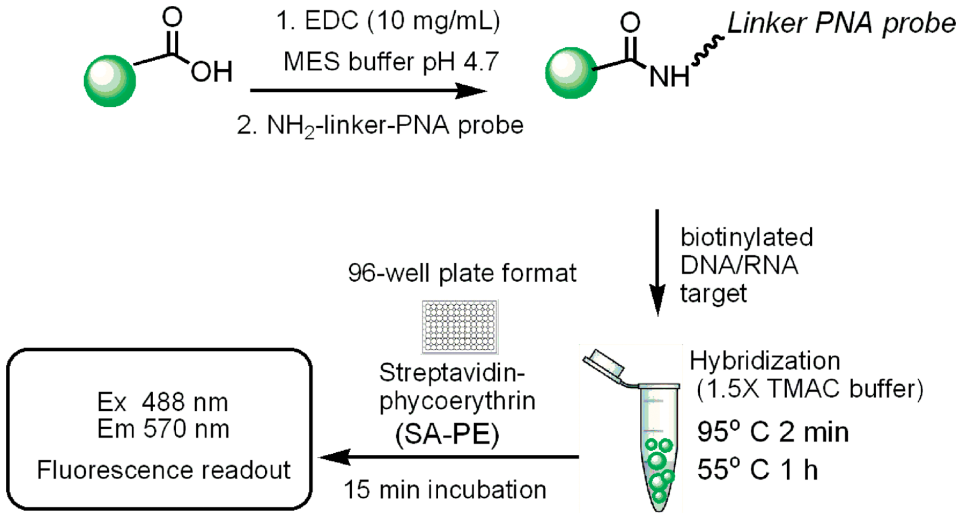Analyzing the genome is one of the most promising avenues for the development of better, more accurate biomarkers for the detection of disease. To keep up with demand, new detection methods must be rapid and sensitive, with a high throughput that still produces reliable results.
Cancer is one of our most devastating afflictions. Each year globally, 12.7 million people learn they have cancer, and 7.6 million people die from the disease, according to the US Centers for Disease Control. Genomic medicine is a powerful tool in the fight against cancer, providing an inside look at the mechanisms involved with the metastasis of tumors.
A new study published in PLoS One has aided in advancing that fight. Researchers have developed a new way to detect the presence of a particular oncogene, or cancer-causing gene, using peptide nucleic acid (PNA) probes. PNA probes are used to detect particular portions of DNA and RNA thanks to their high stability and hybridization efficiency.
The HER2 gene encodes a 185 kDa tyrosine kinase in the family of human epidermal growth factor receptors. This oncogene is found to be overexpressed in 20-30% of breast cancer patients and associated with aggressive and drug-resistant cases. This makes it a good candidate biomarker. There are currently two types of FDA approved tests for the HER2 gene—immuno-histochemistry and fluorescence in-situ hybridization (FISH)—but these are elaborate and time consuming, and only semi-quantitative, so there is a need for a faster and more reliable detection method.

Representation of the assay used in Metaferia B, Wei JS, Song YK, Evangelista J, Aschenbach K, et al. (2013) Development of Peptide Nucleic Acid Probes for Detection of the HER2 Oncogene. PLoS ONE 8(4): e58870. doi:10.1371/journal.pone.0058870. Licensed under the Creative Commons License Agreement.
The PNA probes developed by the research team have shown to be very efficient and sensitive in the detection of the mismatches needed to identify an overexpression of the HER2 gene. They have been observed to have a sufficient analytical linear range of 0.4–400 fmol. This means that they are great candidates for making both quantitative and qualitative measurements of genetic material and the detection of mutations.
The results of this recent study demonstrate the potential use of PNAs as diagnostic probes that may be highly specific for quantitative measurements of oncogene expression.
Luminex is the leader in multiplexing technologies, providing effective and unique methods for high-throughput multiplexed assays.